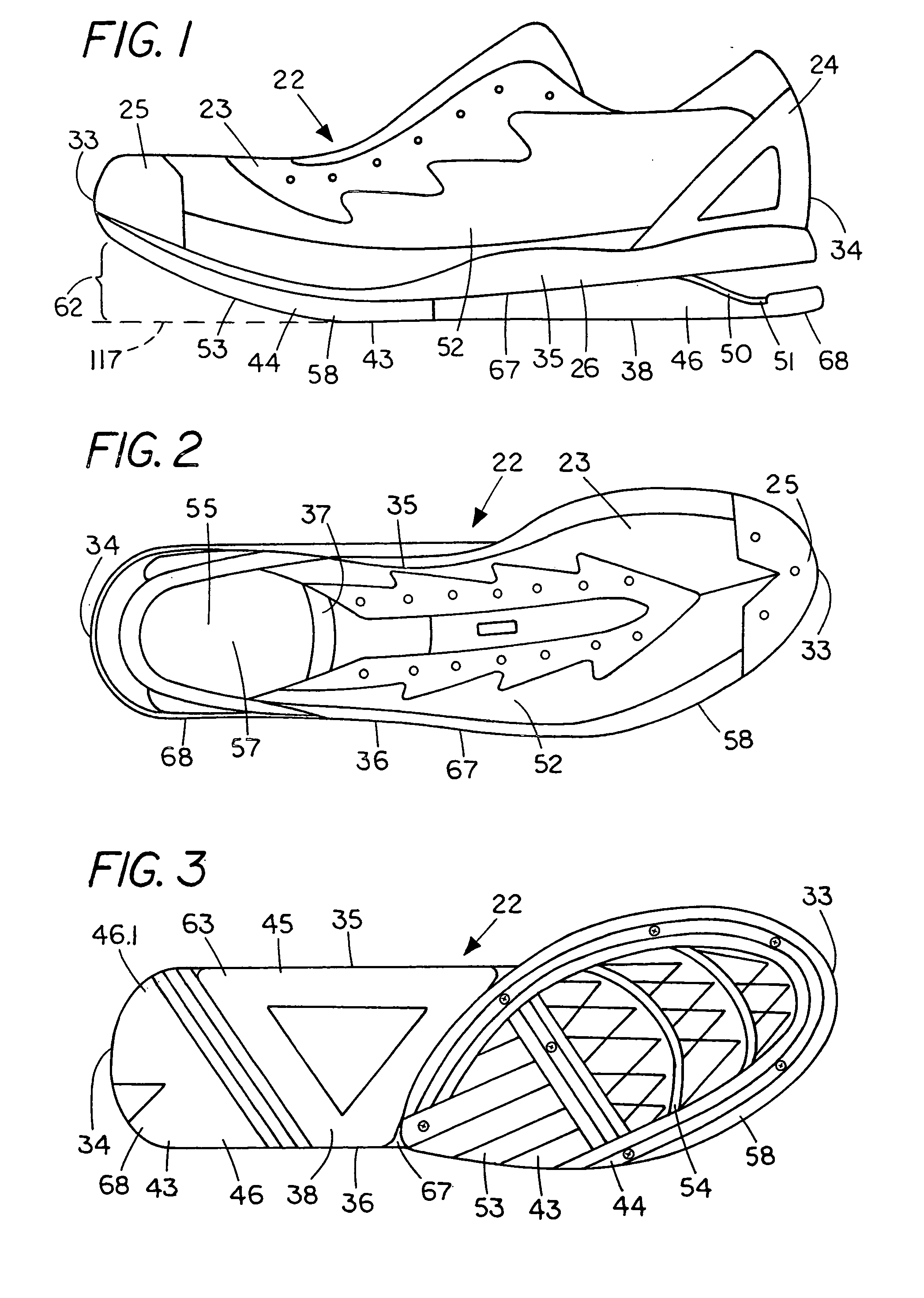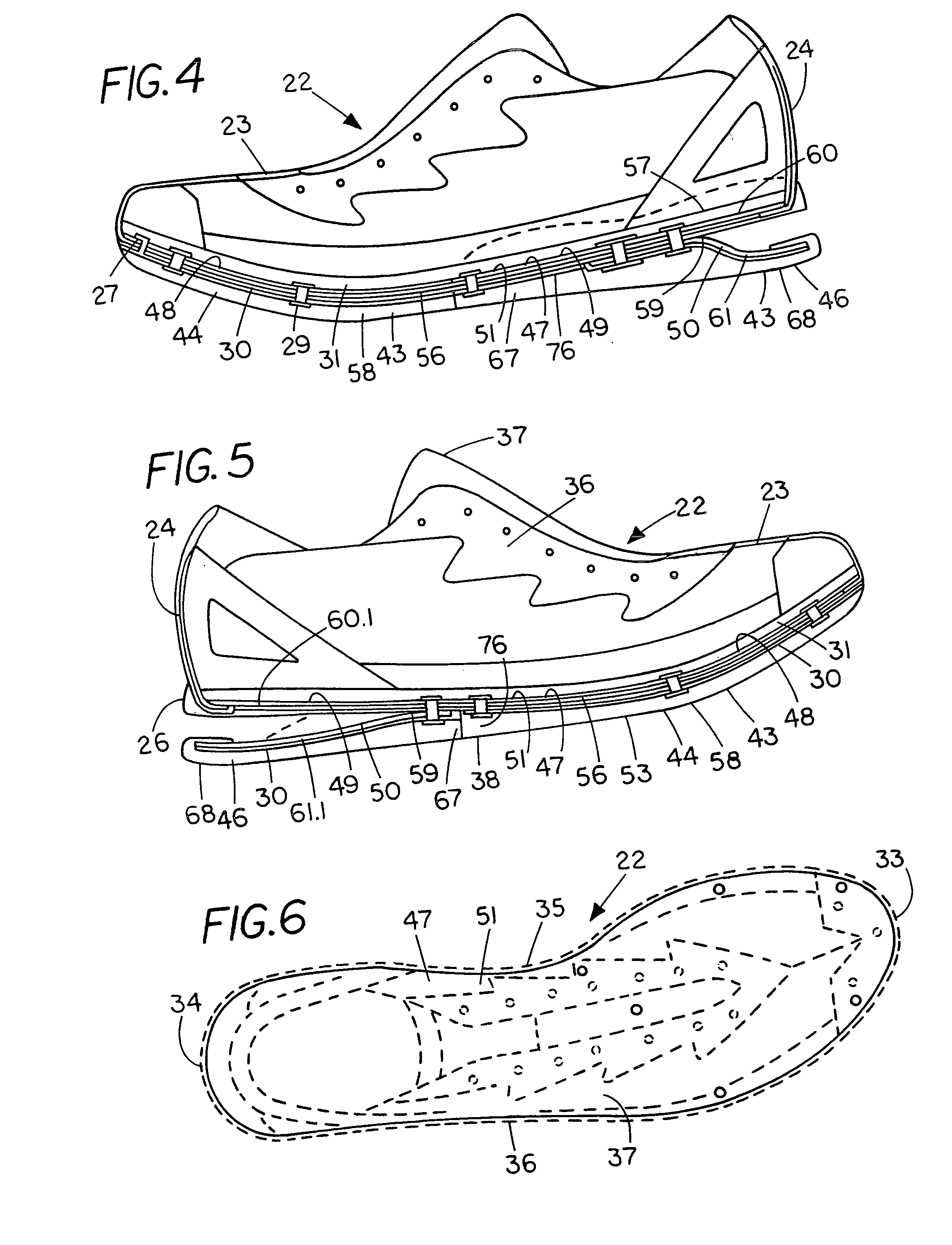Custom article of footwear and method of making the same
a technology of custom articles and footwear, applied in the field of custom articles of footwear, to achieve the effect of improving cushioning, stability and running economy, easy removal and replacement, and long service li
- Summary
- Abstract
- Description
- Claims
- Application Information
AI Technical Summary
Benefits of technology
Problems solved by technology
Method used
Image
Examples
Embodiment Construction
[0709] The article of footwear taught in the present invention can include a spring element which can provide improved cushioning, stability, and running economy. Unlike the conventional foam materials presently being used by the footwear industry, a preferred spring element is not substantially subject to compression set degradation and can provide a relatively long service life. The components of the article of footwear including the upper, insole, spring element, and sole can be selected from a range of options, and can be easily removed and replaced, as desired. The present invention also teaches an article of footwear including means for adjusting the length, width, girth and foot shape. Further, the relative configuration and functional relationship as between the forefoot, midfoot and rearfoot areas of the article of footwear can be readily modified and adjusted. Accordingly, the article of footwear can be customized by a wearer or specially configured for a select target pop...
PUM
 Login to View More
Login to View More Abstract
Description
Claims
Application Information
 Login to View More
Login to View More - R&D
- Intellectual Property
- Life Sciences
- Materials
- Tech Scout
- Unparalleled Data Quality
- Higher Quality Content
- 60% Fewer Hallucinations
Browse by: Latest US Patents, China's latest patents, Technical Efficacy Thesaurus, Application Domain, Technology Topic, Popular Technical Reports.
© 2025 PatSnap. All rights reserved.Legal|Privacy policy|Modern Slavery Act Transparency Statement|Sitemap|About US| Contact US: help@patsnap.com



